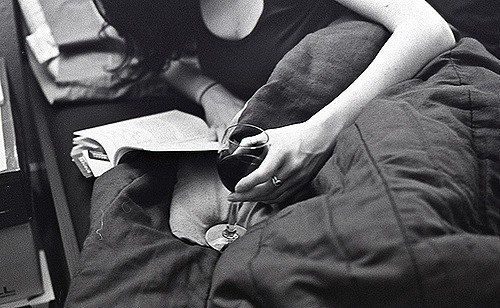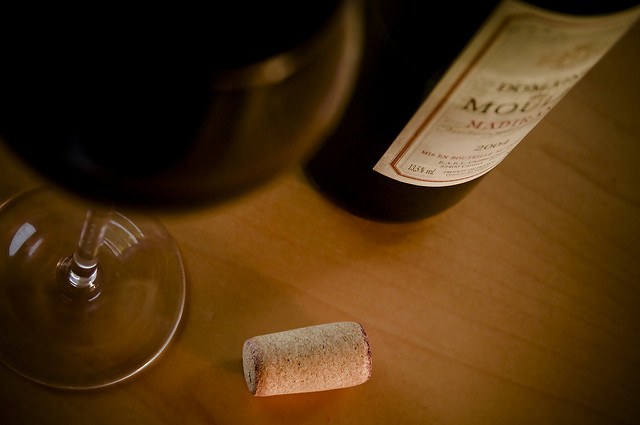
Many people think that wine is reserved for experts, but in fact, the steps to correctly serving wine are quite simple. While the many different types of red wine differ in their specific needs, the tips in this article will get you on track to serving and enjoying that bottle without any complicated equipment.
Storing your bottles
Casual wine drinkers don’t need professional wine storage. The easiest way to store wine without a hassle is to buy a small wine cooler. That way, the temperature, humidity, and light all remain at a constant level that’s ideal for your bottles of wine.
If you don’t have space or budget for a wine cooler, you can easily improvise with a closet, cabinet or other dark, unused space. Here are a few tips for storing your wine without spoiling it.
- Consider buying or building a wine rack. This will make it a million times easier to use your space efficiently.
- Store them horizontally rather than vertically. This saves on space, and experts say it’s better for natural corks.
- Keep them in a temperature-regulated space. An ideal range is approximately 45 to 65 degrees. If you live in a warmer area and will be opening your bottles within a couple of months, the refrigerator will work just fine too. The most important thing to avoid is extreme temperature changes.
- Find a dark place. Especially over the long term; you want to protect your wine from excessive UV rays from the sunlight. Household light bulbs aren’t too much of an issue.
- As far as humidity goes, you’re aiming for anything between 50 and 80 percent humidity. If your area dips far below or above that range, you can control the humidity with a pan of water or a dehumidifier.
The ideal way to serve red wine
Choosing glassware
Different types of red wines are best-suited to various types of glassware. As a general rule, though, most red wine glasses are fuller and larger than white wine glasses, which helps them taste smoother and less bitter.
The correct red wine temperature
Most people assume that red wine is meant to be served at room temperature. This is, however, a myth. The ideal red wine temperature is about 55 to 60 degrees, which is a bit cooler than room temperature. To achieve this, simply stick your bottle in the fridge for 15 to 30 minutes before opening.
Opening up the bottle
This part might seem like a no-brainer, but in fact, everyone has their preferred method of opening a new bottle.
The first step is removing the foil. Sommeliers always cut the foil at the bottom lip, but foil cutters cut at the top lip and result in a cleaner look.
Whichever type of corkscrew you choose, insert the point slightly off from the center of the cork. That way the screw will end up centered in the cork, lessening the likelihood of breakage.
Keep turning the corkscrew until you’re about one turn away from being all the way inside the cork, then pop it out.
You should re-cork the wine after every glass pour.
Aerating red wine: what does it mean, and is it necessary?
Aerating wine is also known as “letting the wine breathe.” By letting your glass of wine to sit for a bit and mix with the air, you give the aromas and flavors time to open up fully.
Experts say that red wine is the type of wine that benefits the most from aerating, but it’s only strictly necessary for particular types of wine. Younger, more tannic wines need to breathe the most since they haven’t had much chance to be exposed to air while in the bottle.
Wine cannot fully aerate while it’s still confined to a bottle, so it needs to be poured into a decanter or directly into wine glasses for an hour or so before serving. Some people also like to swirl their wine around in the glass before drinking to further expose it to oxygen.

Photo by Michael Johnson / CC BY
Enjoying your glass
There are a few factors you’ll want to pay attention to when it’s time to sit down and enjoy your wine. From first to last, these include:
- Appearance: What color is the wine? How opaque is it? Is the color deep or light? Does it appear cloudy or clear?
- Smell: You’ll often hear wine appreciators pointing out complex flavor notes from smell alone. Without any pressure, just notice what the aroma reminds you of. Is it floral? Fruity? Spicy? Woody?
- Taste: Allow the wine to hang out in your mouth for a bit so that you can fully take in the taste. You can “chew” the wine or even aerate it further in your mouth by sucking in some air. What flavor notes do you notice?
Storing open bottles
If you happen to open a bottle that you can’t finish, what should you do? The method for storing an open bottle of wine is slightly different than storing a new, closed bottle. Follow these tips for flawless results.
- Store the bottle upright. This minimizes the amount of surface area that can be oxidized by the air.
- Store the bottle in the fridge, or in a cool area below 70 degrees.
- Keep the wine away from sunlight. Opened wine is even more vulnerable to premature spoiling by UV rays.
- Consider investing in a wine preserver or transferring your wine to a smaller container. This will help it last longer.
Let’s recap what we learned today. Keep your wine in a place with a consistent temperature and humidity level, away from the sun. Buy some wide-bowled glasses, and stick the bottle in the fridge for a bit before opening. Let it aerate if the wine is young, and take your time appreciating the fullness of the flavor and aroma.
Repeat this process with different wines, and you may soon find yourself a bit of a wine expert yourself!